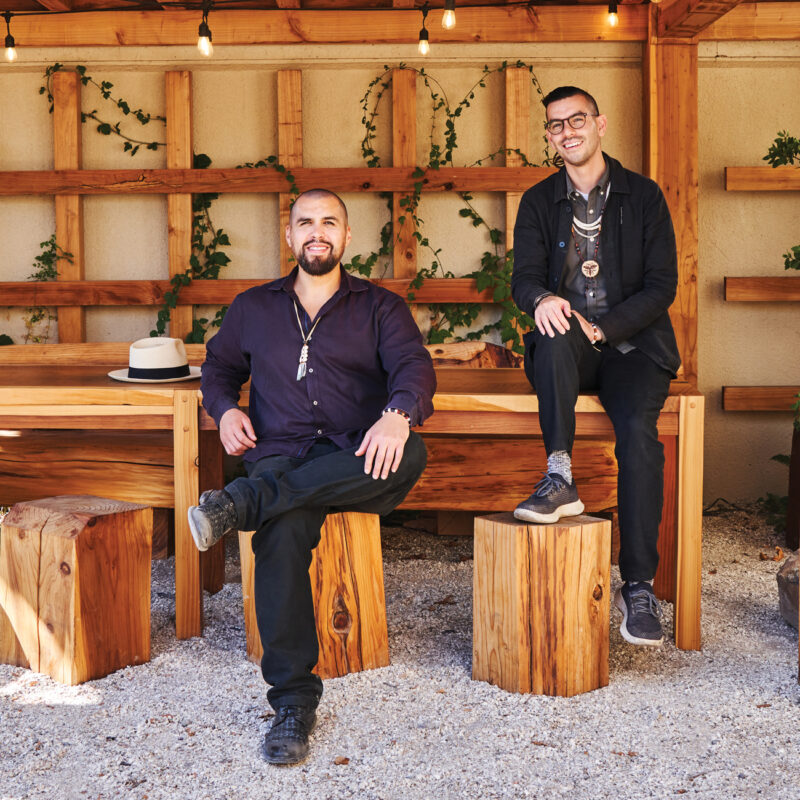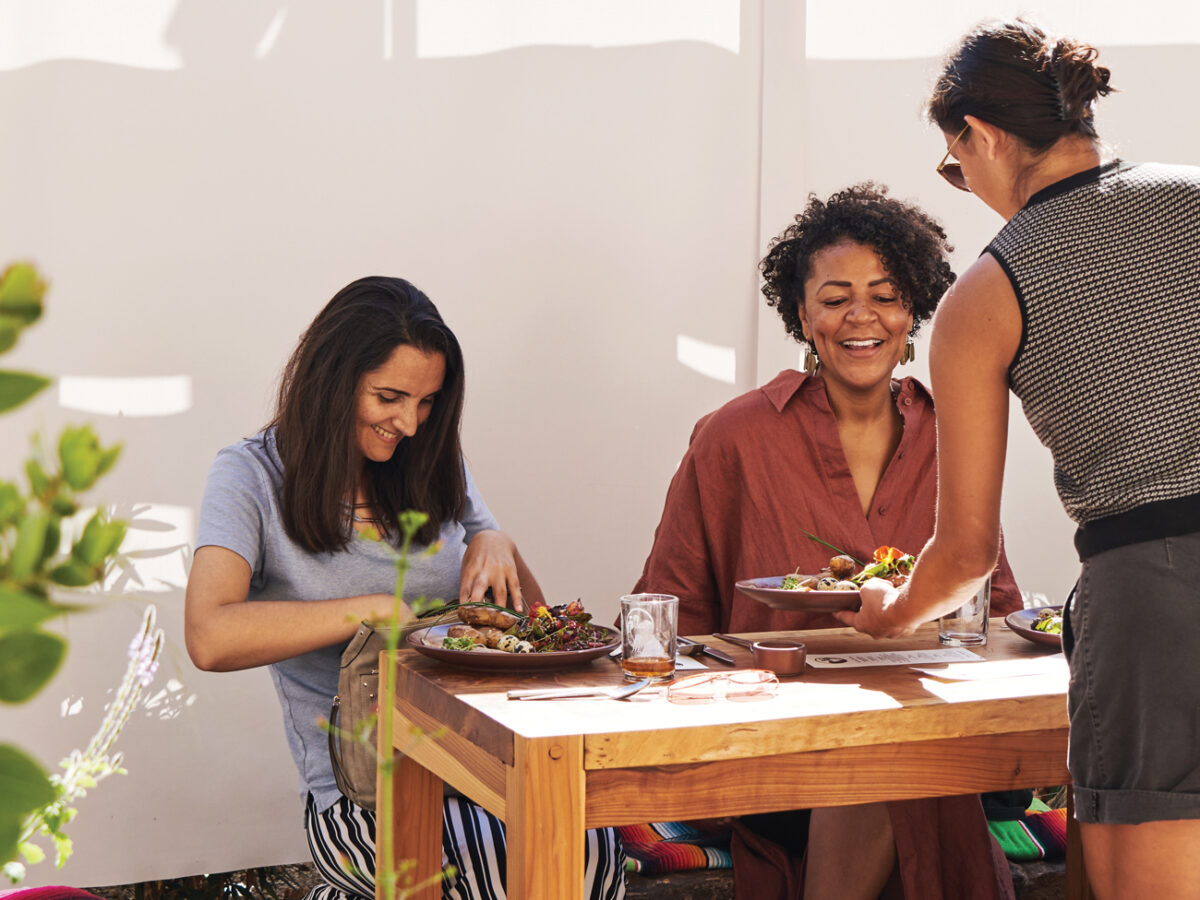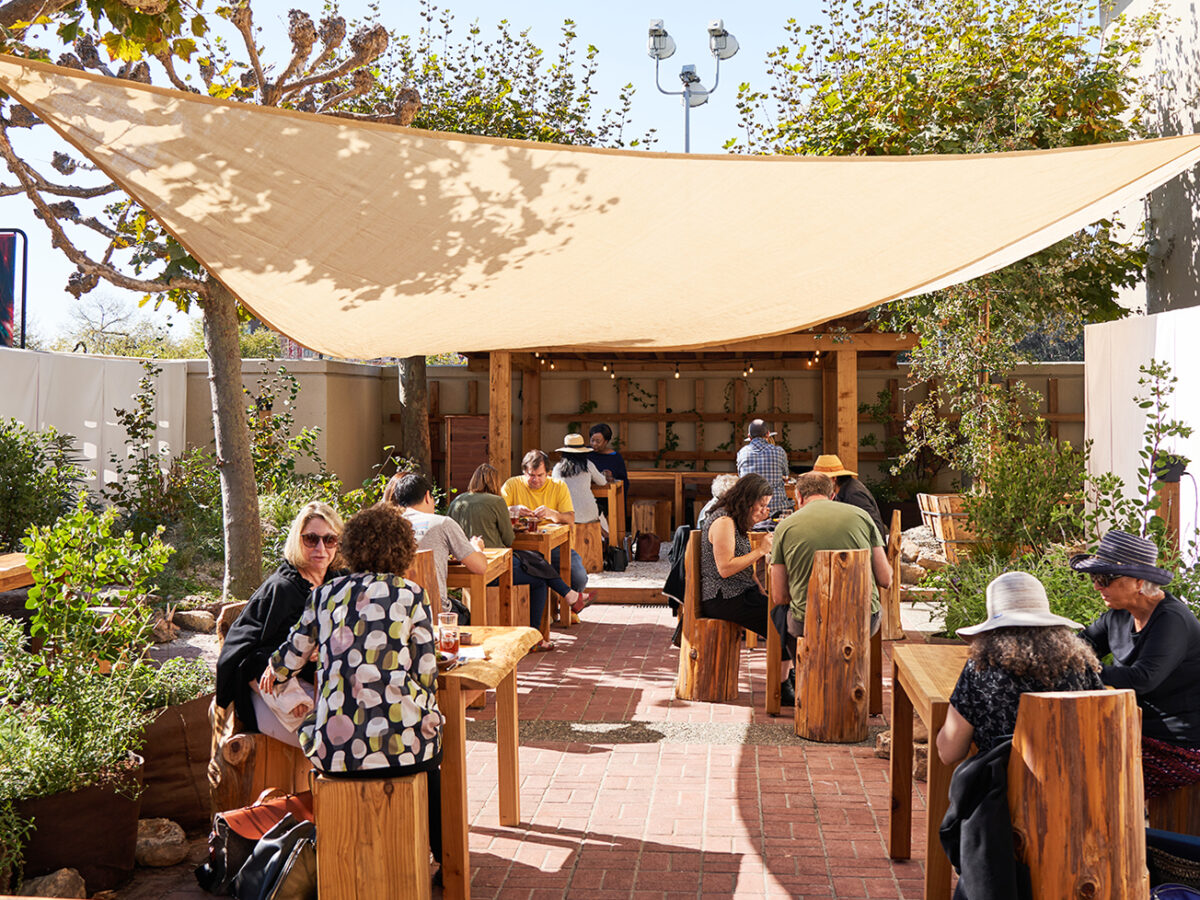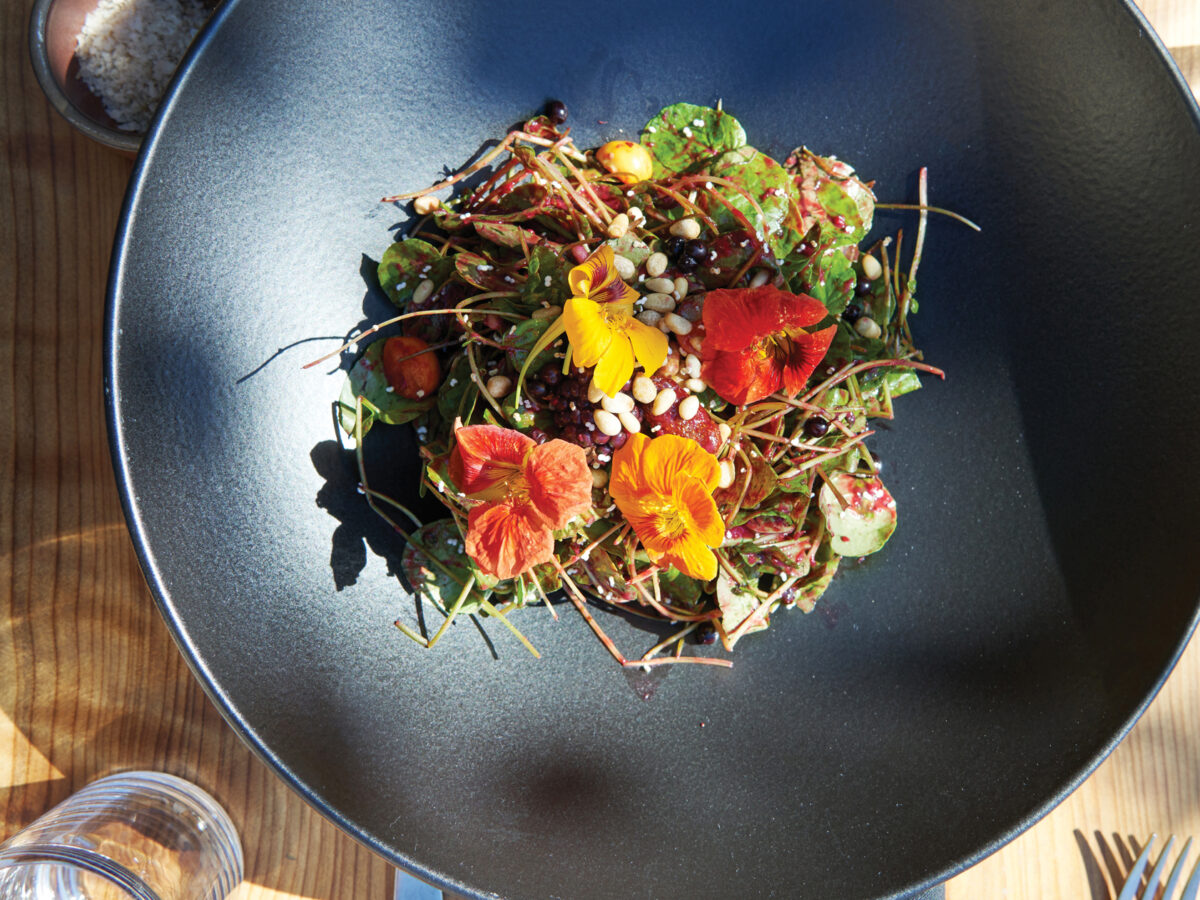Meet the Founders of This Groundbreaking Indigenous Restaurant at UC Berkeley
Vincent Medina and Louis Trevino on the evolution of their cultural culinary project.

What started in 2018 as a pop-up in the back of an off-campus bookstore has become a beacon of California Indigenous cuisine, where co-founders Vincent Medina and Louis Trevino celebrate the culinary heritage of the Ohlone tribe in the East Bay.
Medina and Trevino are activists whose medium of resistance happens to be food. When they were growing up in the East Bay, there was a dearth of storytelling surrounding the resilience of the Ohlone people. With their roving project known as Cafe Ohlone, they homed in on a means of culinary storytelling that showcases the vibrance of their culture. The latest iteration of Cafe Ohlone is ‘oṭṭoy, which means “to repair” in the Ohlone’s Chochenyo language. This collaboration with the Hearst Museum at UC Berkeley is equal parts educational installation and degustation.

Thomas J. Story
The journey begins by walking through a serene outdoor space alive with plants from Oaktown Native Plant Nursery and birdsong harmonizing over the speakers. In an organic minimalist space designed by the landscape firm Terremoto, guests enjoy a meal interspersed with Medina’s powerful voice sharing stories of Ohlone land, language, and culture.
There are several ways to visit ‘oṭṭoy, including weekly tea ceremonies, lunch tastings, dinners under the stars, and Sunday brunch. Meals are marked by dishes like soft-boiled quail eggs, cold-smoked trout, and a bay laurel-spiked salad of indigenous ingredients—all of which sing of the surrounding land and community.
Here, Medina and Trevino share the story of Cafe Ohlone and ‘oṭṭoy.
To start, tell us a bit about ‘oṭṭoy. What region and culinary traditions are you celebrating?
Cafe Ohlone was established in xučyun (translation: Berkeley) in the summer of 2018 as an extension of our community work through mak-’amham (translation: our food), an Ohlone cultural institution focused on the continuity and restoration of our traditional culture.
Our work is specific to the eastern shores of San Francisco Bay, the East Bay, to which our community has an unbroken relationship, and where our people have always lived.
Why is this work personally important to you?
Growing up, there wasn’t much representation of Ohlone identity outside of the homes of our family because of the harm that occurred through a history of violent colonization. However, the culture continued to live—albeit practiced quietly in our homes in order to keep these traditions, and our people, safe during unsafe times.
Now we are in a time of greater awareness. With our elders’ blessings, Cafe Ohlone was developed to be a tangible space where our culture and cuisine can be reflected within our beautiful homeland.
The dishes we prepare represent Ohlone gastronomy and are specific to coastal, central California, specific to the East Bay, as well as dishes our family embraced at different periods of our history.

Thomas J. Story
What is the one message or teaching that you hope diners walk away with after experiencing your food?
Every generation of us Ohlones has always been here in the East Bay. We’ve never left our land, and we never will. We want our guests to associate us with victories and strength, because our identity, culture, and presence has persevered as a result of the strength and sacrifices of those before us—our elders and our ancestors. [We want to showcase that] the Ohlone culture is beautiful and dignified, as we have always known to be true.
You include sound and language in the experience for guests, which is really quite beautiful to experience. Can you share why that’s something you like to include?
We want people who walk into Cafe Ohlone to be in a world reimagined, a sovereign space that reflects Ohlone culture as we see it at home, both rooted in old ways but not shying away from modernity. When guests enter Cafe Ohlone, a soundscape moves through the outdoor terrace surrounded by California native gardens where native birdsong, the sounds of Chochenyo language in song and conversation that come from the family are intermingled. There is so much abundance in the space, and this reflects the world as we know it should be here in the East Bay. These sounds have a way of transporting people and their mindsets away from the urbanity of the street, and also reflect that our language is alive, spoken intergenerationally by elders and children alike.
In fact, Chochenyo language is growing in speakers every year, not declining. We want those dining with us to see the world as we see it, and our soundscape helps to accomplish that goal.
If there’s one ingredient or dish that you feel embodies the culinary traditions you’re celebrating, what would it be?
Well, it has to be paamu, or acorn soup. Ohlone gastronomical traditions are complex, seasonal, and hyper-localized. Acorn soup is our staple food. It accompanies every meal in our traditional culture and continues to be such a comfort food today to us. Silky and sweet, acorn soup takes about six months to prepare from start to finish.
The process begins with gathering acorns in the East Bay hills, then letting the acorns cure for months until its moisture is removed. The acorns are then shelled using family baskets that are sometimes over 100 years old to winnow their skins off, grinding them into a flour so fine it is then sifted in another basket, then leaching the tannic acid out through a slow drip for a half-day.
Finally, the acorn flour is ready to be made into soup, which is traditionally done with treated cooking stones in cooking baskets that are so finely made that they can hold water. Within minutes, boiling hot acorn soup becomes gelatinous and thick, its natural sugars caramelize until it becomes lightly sweet, and is ready to be eaten.
We eat paamu with everything else on our plate, similar to how rice or bread is eaten in other cultures. Seared venison backstrap, smoked salmon, or roasted chanterelles are dipped into it, and it accompanies every bite so well. Today the family will even have it alongside tamales.
Acorn is a food that has sustained Ohlone civilization for thousands upon thousands of years, a food we believe is given to us by God during our creation time, and it still sustains us today.

Thomas J. Story
What do you hope the future of Indigenous cuisine is, both here in the West and globally?
We want traditional Indigenous foods to be respected for their inherent value, and given the protection they deserve by having safe spaces to gather and have access to the foods specific to place. In the San Francisco Bay Area, there is constant development, and that means less and less spaces to gather where these beloved foods were gathered by generations before us. Climate change also is accelerating the lack of access to some foods that were common just a few decades ago. Locally and globally, climate justice is inherently connected to the well-being of Indigenous foodways.
Here on Ohlone land, we want open spaces to be protected, gathering rights for our people, and for repair to happen where harm has been done as we work to see the old ways stay strong with our elders’ leadership.
What are meaningful and considerate ways that readers can engage with native cuisines in California and beyond?
Here in the San Francisco Bay Area, a great way is to visit us at Cafe Ohlone to learn more about us, our rich culinary traditions, and our living culture. Learning directly from the people indigenous to the region in which the education takes place is paramount. This, of course, extends to all places.
Every place within the range of Sunset magazine’s readership has an indigenous identity, people, and cuisine. We encourage everyone to respect and honor Indigenous culinary traditions as the first culinary traditions in respective regions.
Here in the San Francisco Bay Area, the culinary scene is incredibly diverse and multicultural, which we at Cafe Ohlone enjoy and celebrate. But we know that here in our homeland, our Ohlone foods, prepared by our people, are to be held in the highest esteem, because they are indigenous specifically to this place.
Our foods hold within them the beautiful reality of a world before colonization, the ways in which our family continued to live happy, meaningful, and dignified lives during even the most difficult periods of our history, the dynamic, joyful, and refined Ohlone community today, and the possibilities of a future wherein our Ohlone people, cuisine, and traditions continue to flourish.
We simply encourage mindfulness of these facts as Sunset’s readers think about cuisine.
Kahha Maarah Ohlone Salad

Thomas J. Story
This salad, served at a recent installment of ‘oṭṭoy at Cafe Ohlone, is one of the truest ways to taste the abundance of the East Bay. Using a wide variety of native ingredients topped with a vibrant berry dressing that’s punctuated by the herbaceous richness of California bay laurel, the salad’s flavors are at once familiar and exciting. The recipe calls for ingredients like East Bay pickleweed, also referred to as sea beans, which can be found at specialty grocers like Berkeley Bowl and select Whole Foods locations.
Use what you can gather mindfully; the real joy is experiencing the colorful array of ingredients and appreciating the land and culture from which it comes.
Search All of Sunset’s Recipes
Read the Current Issue Here!
Get one year of Sunset—and all kinds of bonuses—for just $29.95. Subscribe now!

